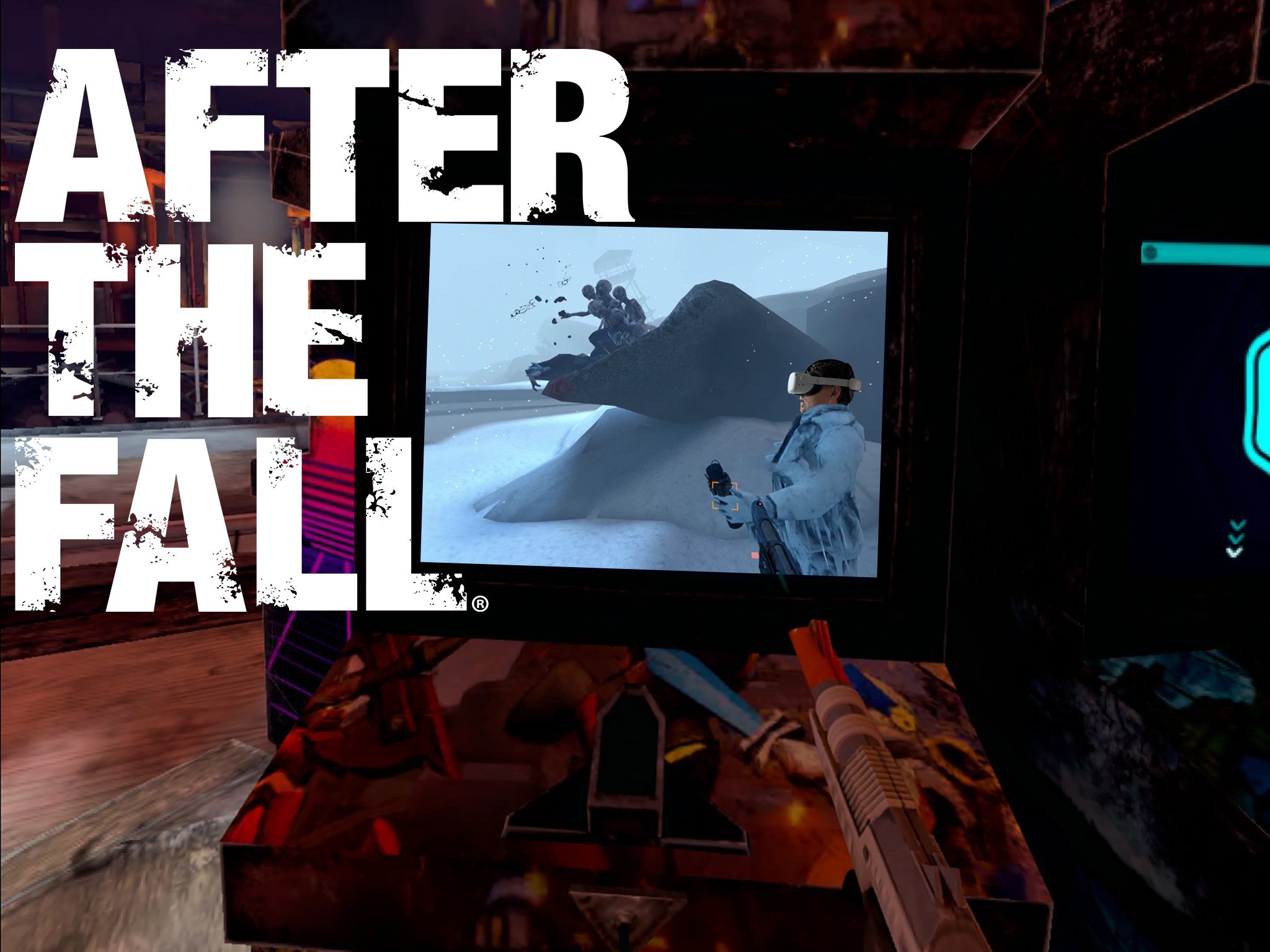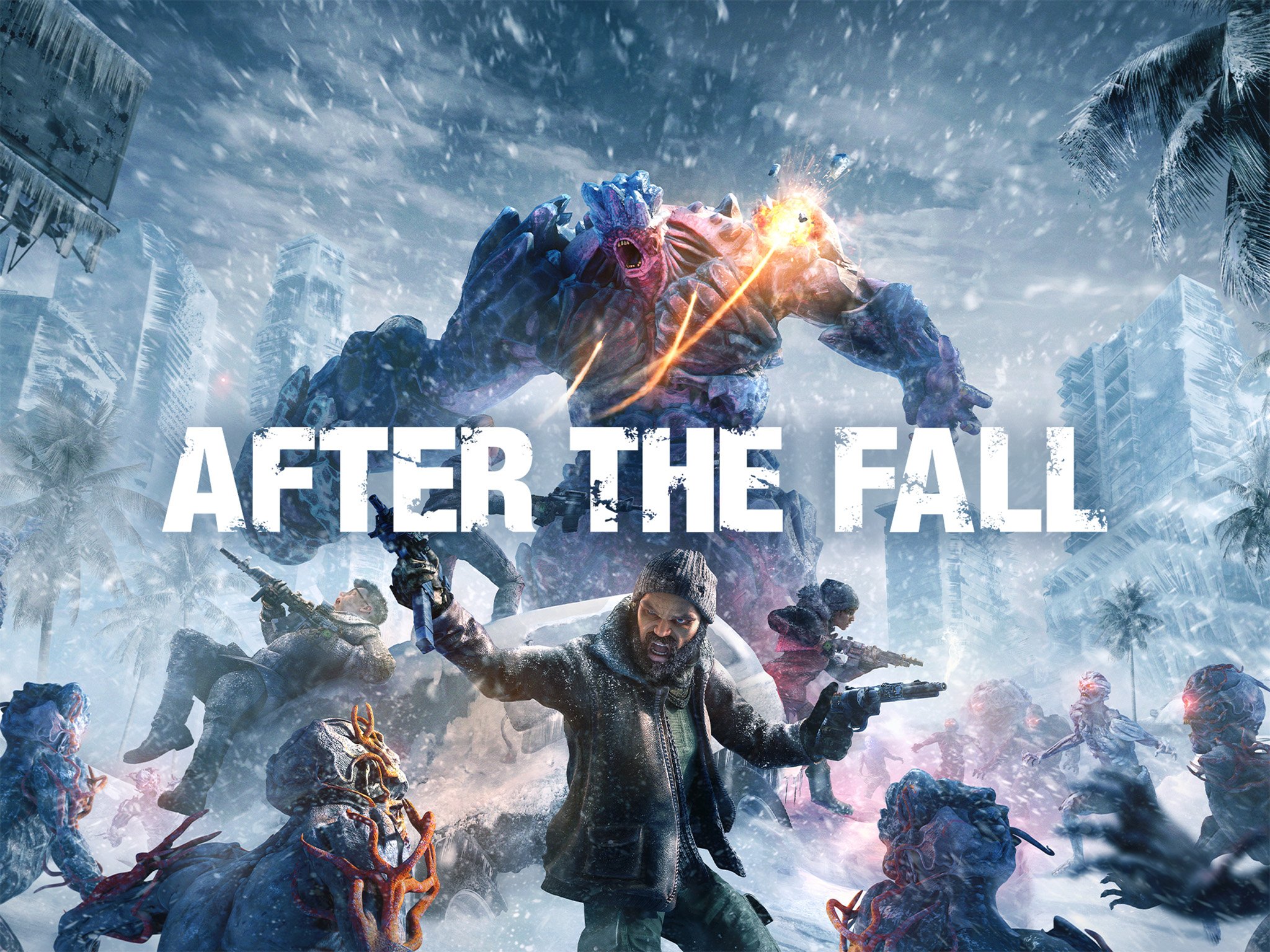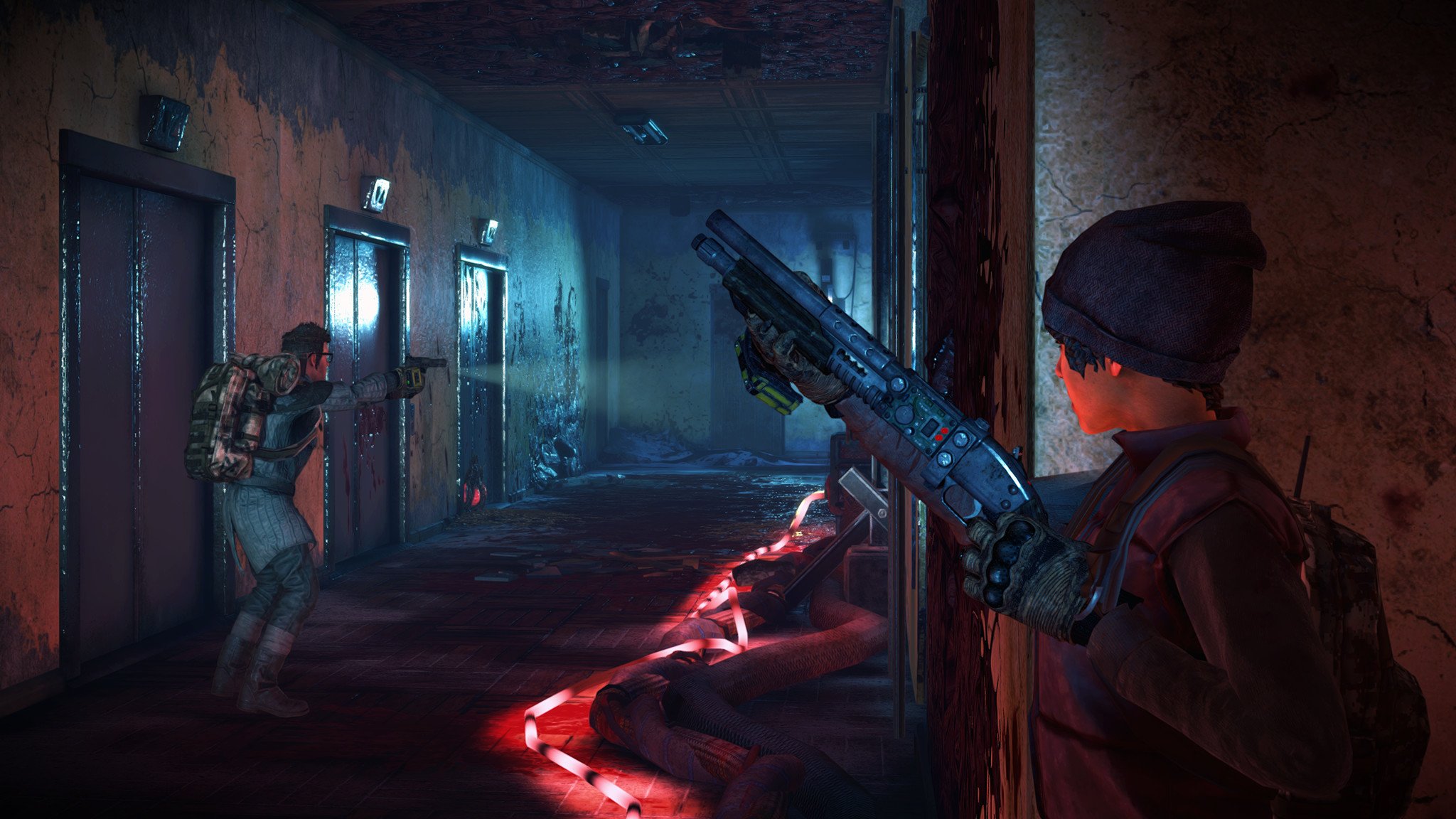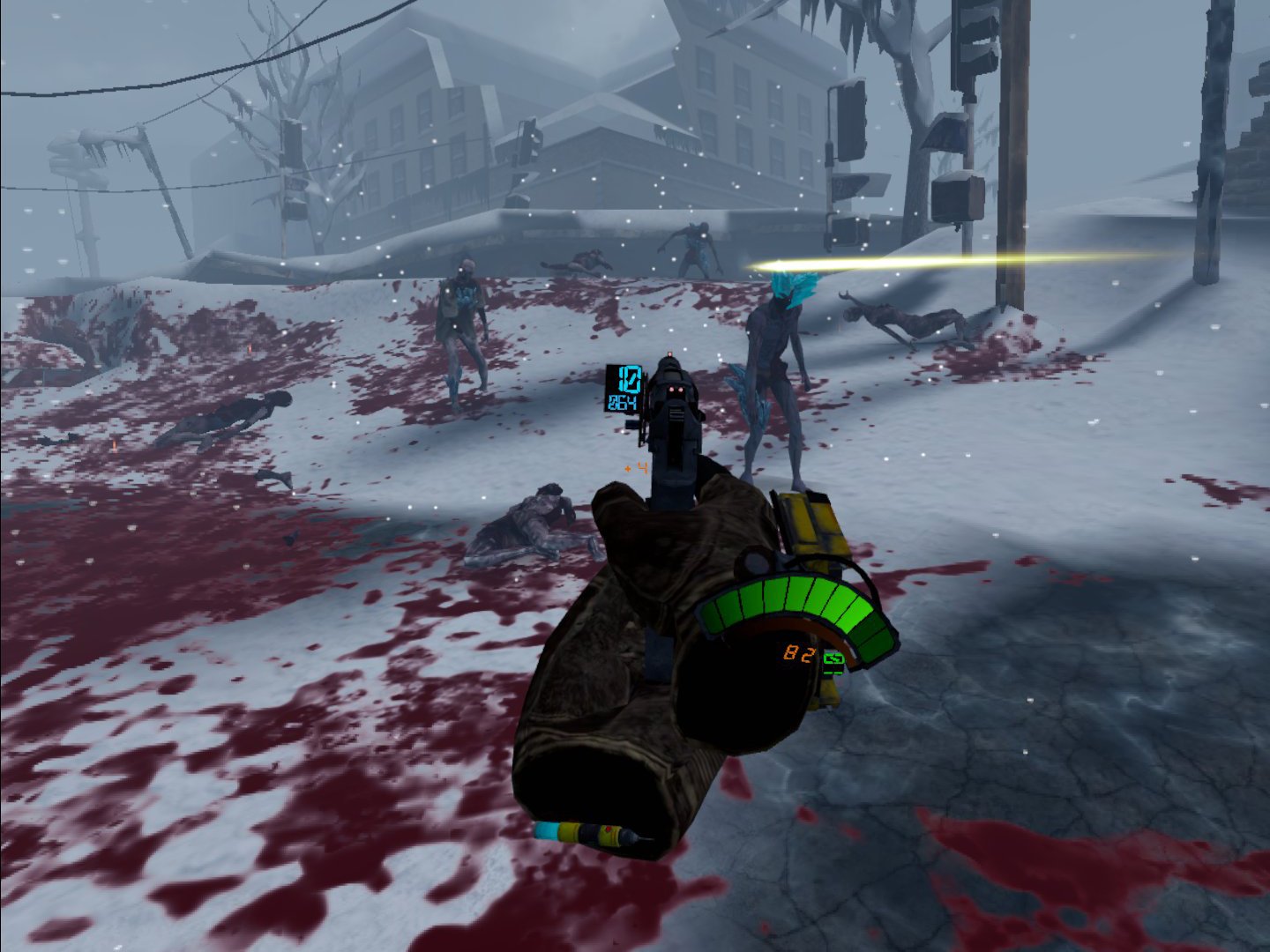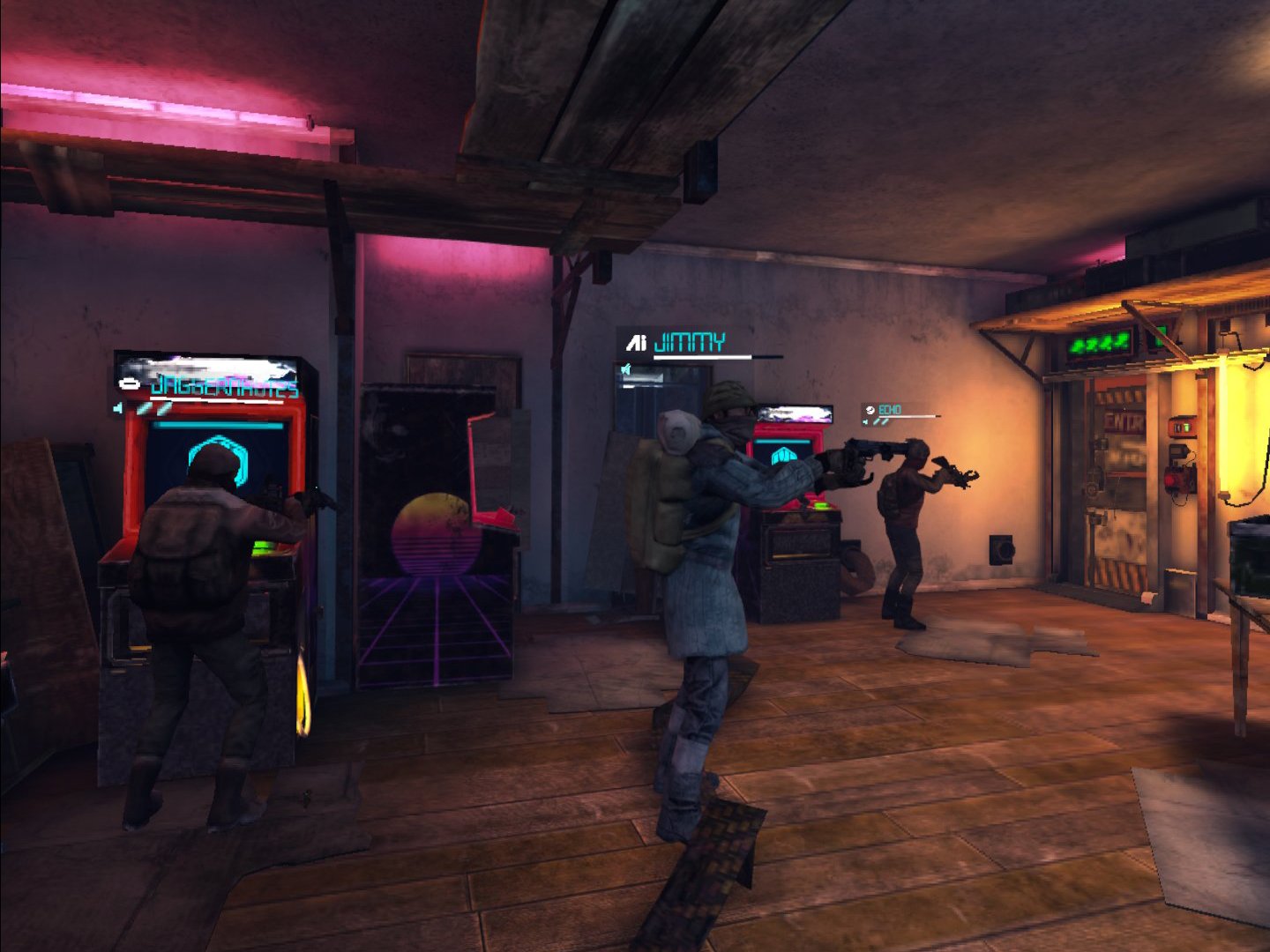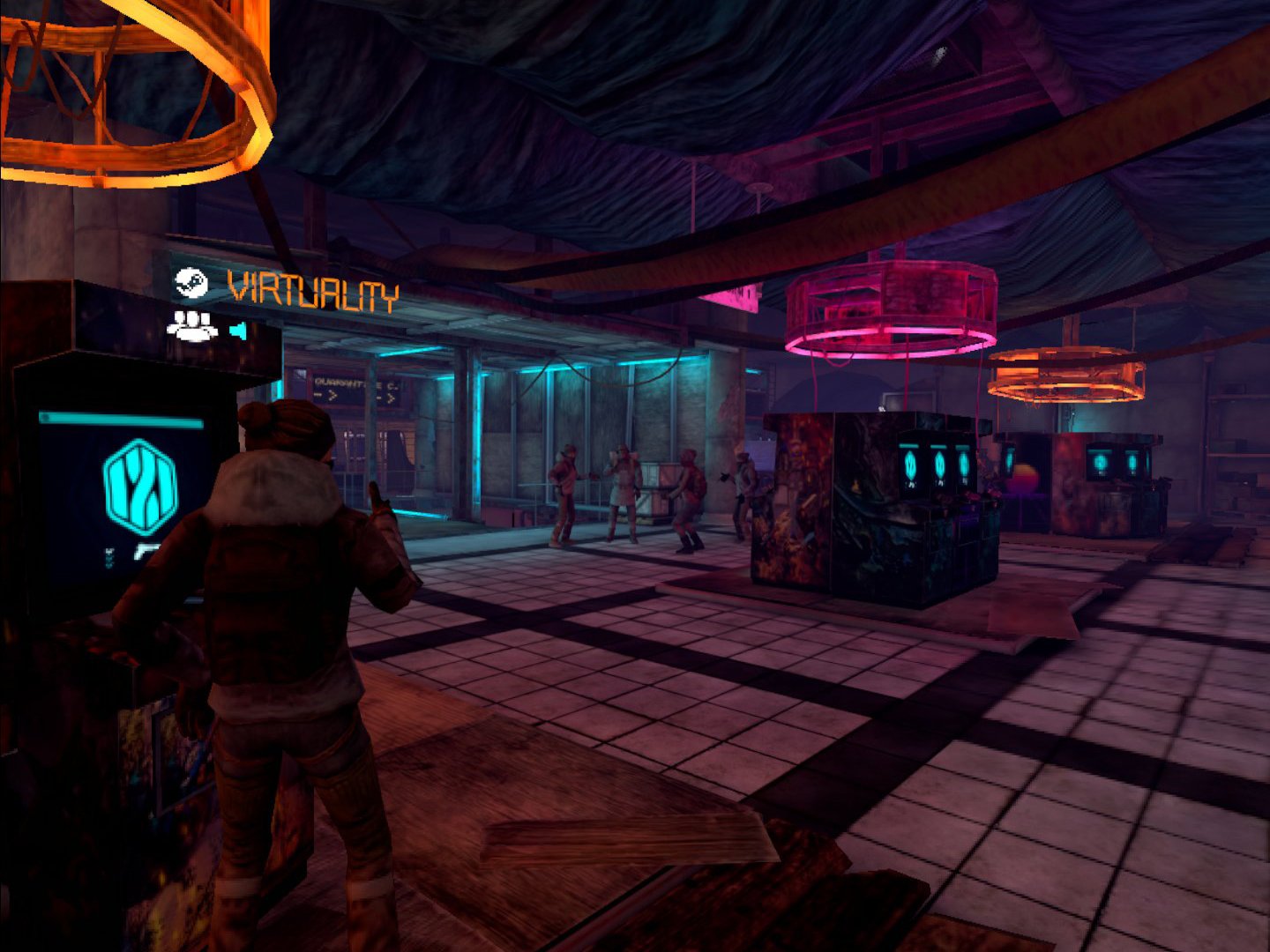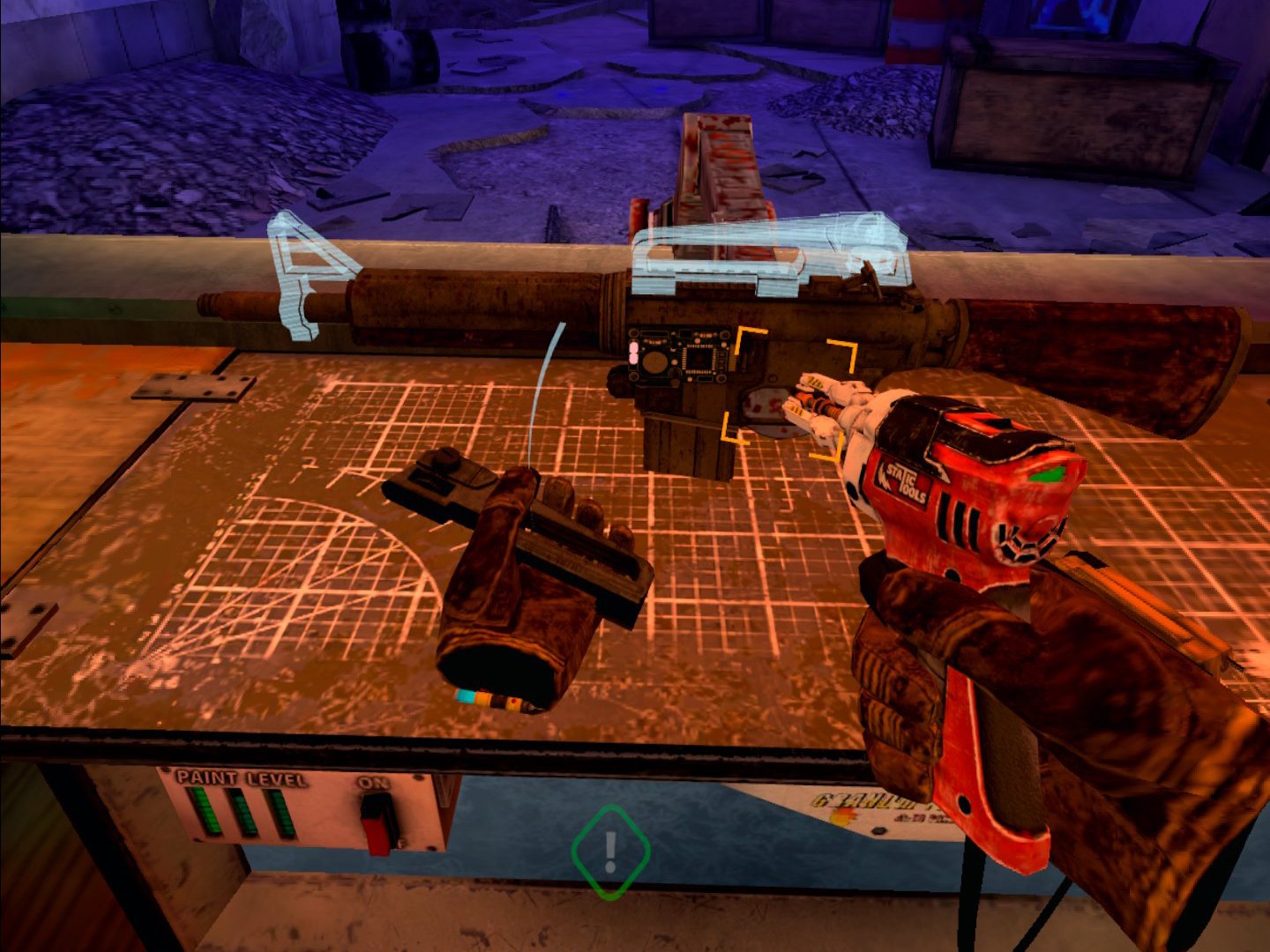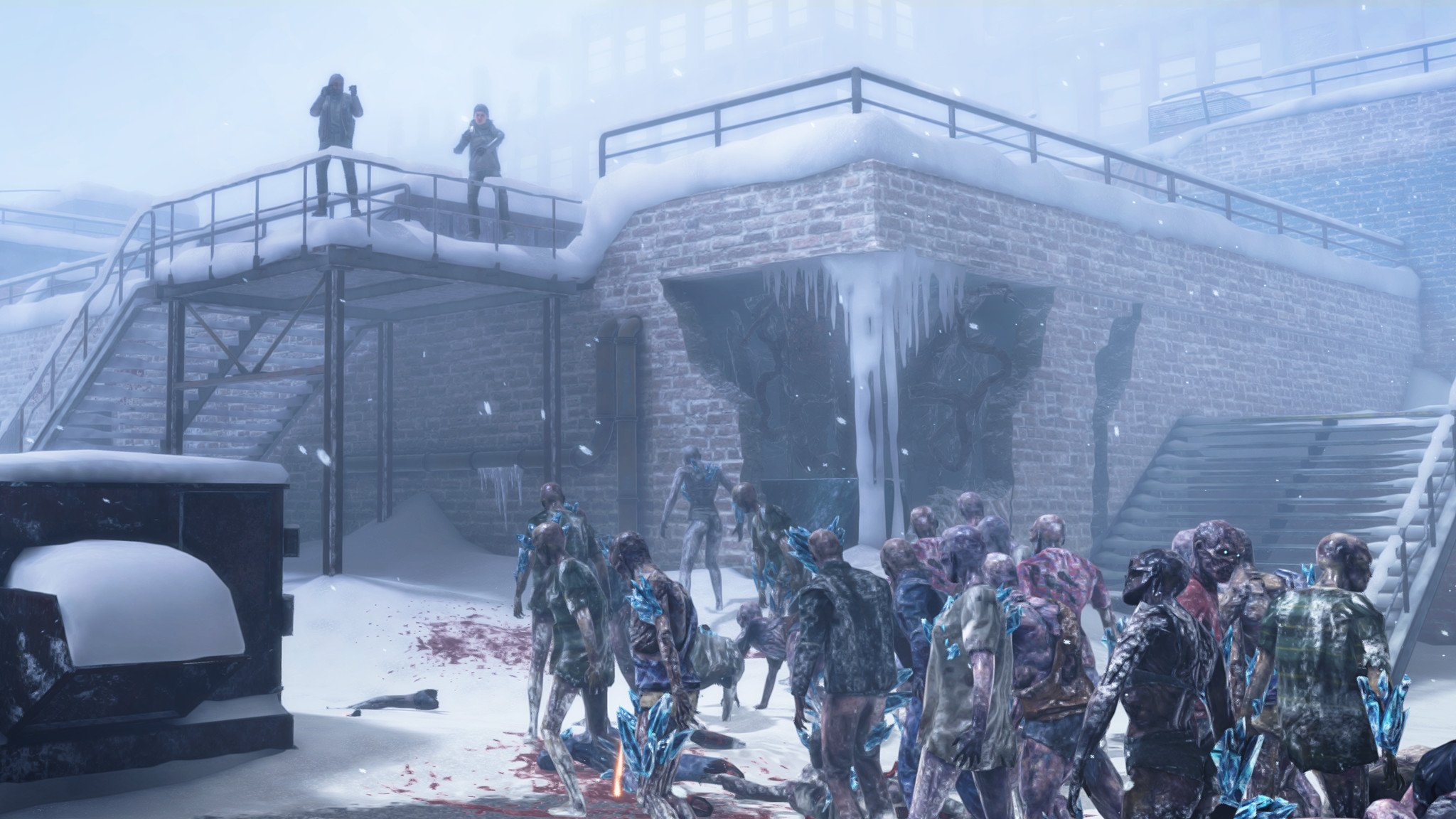After the Fall review: 80's cheese and lots of zombies, please
Shoot zombies, harvest their essence, upgrade your guns. Repeat.
Fans of the Left 4 Dead series are probably very happy with the year 2021. First, we got Back 4 Blood, the spiritual successor to Left 4 Dead that was created by the actual developers of the original title. That one changed up some key gameplay components but is a compelling title, nonetheless.
Now comes After the Fall, a new zombie shooter from the developers behind Arizona Sunshine, one of the best Quest 2 games you can buy despite being several years old now. At its core, After the Fall is Left 4 Dead meets Killing Floor. It takes the familiar level formula from Left 4 Dead, adds in the killing currency and upgrade components from Killing Floor, and cranks up the cheese with an 80's theme that feels all too right from the start.
It's incredibly impressive to see Vertigo Games not only launch the game simultaneously on three platforms - that's Quest 2, PSVR, and PC VR - but to also provide a way for players to seamlessly play cross-platform seemingly without issue. Is this the co-op shooter we've been waiting for? Let's take a look.
After the Fall review:After the FallBottom line: After the Fall is a 4-player co-op zombie shooter that pits players against the Snowbreed, a unique family of zombies that enjoy residence in post-apocalyptic snow-ridden LA. A glorious 80's setting with plenty of tropes fills the halls of this arcade shooter, begging players to kill more zombies in order to upgrade weapons and trudge through more difficult levels alongside their friends, all in the comfort of your favorite VR headset.
The Good- Cross-platform from day one
- Long endgame
- Excellent pacing
- Impressive visuals and gore
- Lots of accessibility options
- At least one year of planned content additions
- Only 5 areas for now
- Enemy variety could use some work
- Weapons have no weight to them
$40 at Oculus$40 at PlayStation$40 at SteamIncluded with Viveport subscription
Disclaimer: This review was made possible by a review code provided by Vertigo Games. The company did not see the contents of the review before publishing.
After the Fall: The co-op arcade shooter to beatI love co-op shooters. There's really nothing quite like working alongside friends to accomplish a common goal, and two series have stood out among the pack over the years: Left 4 Dead and Killing Floor. I've hosted countless LAN parties back in the day and these two games were always the ones we'd play, even if we began by playing something else.
They're classic, timeless, and still hold up today even with a myriad of other releases. But, up until now, there hasn't been a VR game that could really channel the energy I felt when playing either of these titles.
After the Fall channels the energy from Left 4 Dead that I've been sorely missing in VR.
| Category | After the Fall |
|---|---|
| Title | After the Fall |
| Developer | Vertigo Studios |
| Publisher | Vertigo Games |
| Genre | Shooter |
| Platforms | Quest 2, PlayStation VR, PC VR |
| Game Size | 3.4GB (Quest) |
| Play Time | 5+ hours |
| Players | Single/Multi |
| Launch Price | $40 |
That all changed the moment I played my first After the Fall match with friends. From the moment you jump into any of the five areas, you'll immediately feel the influence the Left 4 Dead franchise had on this game.
That same familiar formula can be found from the beginning to the end of every level, which is bookended in safe rooms that can be used to refill your arsenal.
Interspersed between safe rooms are areas you'll progress through - each of which take roughly 10 minutes to get through - where you'll shoot hundreds of zombies, collect their essence (harvest as it's called in After the Fall), and spend it at arcade machines which fill the safe rooms peppered throughout each level.
The money component is where the Killing Floor comparisons come in, but After the Fall goes further than Killing Floor ever did thanks to weapon customization. There's zero character customization, though, which is something we'll cover in the section below.
Weapons are kept either on-body - which I preferred, as this was one of the best on-body inventory systems I've ever used - or accessed via a weapon wheel. Keeping to the Half-Life: Alyx similarities is the presence of glove inventory, where you can stash one single item in each of your gloves, which feels natural despite being physically impossible in the real world.
The on-body inventory and reloading mechanics are some of the best I've ever used.
Throughout each level, you'll encounter several different types of enemies, including three hero units that help change up the pace just a bit. As you're in a frosty, snow-covered LA that takes place in an alternate history, dismembering and blowing chunks off of any of these enemies leaves a particularly gruesome trail of blood along the way. In a way, it's a red paint simulator, as a friend of mine noted during his first play session with me.
Indeed, the level of gore is seriously impressive, not just in the sheer nature of it, but also on a technical level. On the PC side, you'll see heaps of ragdoll bodies lying around after the end of every battle. These bodies mostly disappear on the Quest and PSVR versions, although a few stragglers will be present.
The amount of blood is consistent on all three platforms, though, and you'll see plenty of evidence of a battle having occurred without worrying about your preferred platform's hardware prowess. Similarly, the PC and PSVR versions have the expected changes over the Quest 2 version: better textures, better lighting, more detailed models, and even physics on individual objects in the environment.
No matter which platform you play on, though, the enemy count doesn't change, and you'll regularly be surprised by just how many enemies are on-screen at once. There's nothing quite like it in VR, and it's incredible to see this take place on the Quest 2's relatively tame hardware when compared to a high-end PC.
Vertigo Studios has breached the technical boundaries of the Quest 2 with After the Fall, to be sure.
After the Fall's gameplay flow follows a specific formula for the first five hours or so, then morphs a bit after you have opened up all the possible areas of exploration. You'll start at The Line, the 32-player hub where players from all platforms automatically congregate and can easily party up by pointing at one another and clicking to invite.
Missions are selected at most arcade machines scattered throughout the main hub area, although a few arcade machines have a great little Arizona Sunshine arcade game on them - a lovely little nod to how Vertigo Studios' first VR shooter might have looked if it were developed in the era of Oregon Trail.
You'll talk with the matron of The Line, Luna, between each of the story missions, helping to weave together each area with a tiny bit of story. It's much lighter on dialog and story than Arizona Sunshine was simply because it's much more focused on being an arcade shooter that you experience with others.
Co-op always felt a bit tacked on in Arizona Sunshine, especially given the main character's monologues throughout the game, but it's most certainly front-and-center in After the Fall.
Co-op is front and center in After the Fall, and cross-platform play has never been more impressive or easy.
The ease of which you can join up with other players from any platform really cannot be understated. It's unbelievable how much work Vertigo Studios has put into making the feature work and, although it requires a game-specific friend code to actually add your friends to a friends list, playing with anyone in the lobby is as easy as choosing a run and waiting for the roster to fill up.
Once you've opened up all five areas, the game turns into a farm fest where you'll go through each area in order to harvest more essence in order to buy upgrades back at The Line. Every gun has several components that can be upgraded, including barrels, stocks, and sights, each of which are acquired randomly throughout each play session by collecting floppy disks found randomly throughout said area.
Enemy encounters, too, are very much randomized. Some runs might take you through hordes of enemies in one section, while other runs will pelt you with hero unit after hero unit. Placements of enemies, power-ups, and secrets are all randomized too, lending to the concept that each run is different and organic.
PvP is also available, but it's clear that players prefer the PvE experience.
The game will always squad you up with three other characters - played by AI if you don't have humans joining you - and encounters will scale with the number of human players you have in each game.
On top of that, there are four difficulty levels to choose from before you start each run, the last of which - that's nightmare difficulty - will actually cause you to lose any weapons you have in your loadout when you die. Definitely don't try this difficulty if you're not partnering up with your best crew.
A PvP deathmatch option is also available for folks who want to change things up a bit, but this isn't just your standard deathmatch shooter. While running around shooting other players to rack up the highest score, you'll also be joined by the undead who just can't wait to intervene in your grudge matches.
It's a nice little twist that makes it feel just a bit different from the myriad of other deathmatch shooters available. At launch, however, it's clear that most players prefer the main PvE experience as the PvP sessions I tried starting were completely vacant.
After the Fall: Surprisingly light on contentAfter the Fall has been in development for several years now, yet it only provides five areas for players to explore. It's a bit disappointing in number but, as I've put more time into it, I've come to realize that this isn't as big a deal as I initially thought.
For me, the bigger disappointment was that there's no character customization of any kind. Each run gives you a random player character and there's no way to change this or customize the character. Thankfully, these are just cosmetic characters and don't have any specific stats, but I'd love to see a future update where harvest essence can be used to unlock all sorts of cool clothes and skins.
Similarly, there are really only two main types of enemies: fast or slow. Each of these movement types is augmented with a random amount of "ice armor" that'll require players to empty more bullets into an enemy before it finally falls.
The lack of enemy model variety isn't felt as strongly on the PC where the model quality is substantially higher and more interesting looking. On the Quest 2, however, you'll likely find yourself focusing only on places to shoot rather than admiring the models. Not much Vertigo can do about that on a technical level, but it would still be nice to see a bit more variety or color every once in a while.
Enemy variety could use a boost, and there's no character customization to be found.
Lack of melee combat affects the gameplay itself a bit more than character customization, a strange omission considering the initial demos of After the Fall from 2019 included melee combat. It's entirely possible this could be added back in during an update, but it's completely missing at the moment.
Weapons themselves tend to feel a little on the light side and don't exhibit any real weight to them at all. That puts After the Fall at odds with games like The Walking Dead: Saints & Sinners, which put physics at the forefront in lieu of huge mobs of zombies.
While I eventually got used to the weightless feeling of the weapons, it took a significant amount of time before I felt comfortable with the way they handle. This one is likely going to be down to preference, but it's probably going to feel at least a little bit odd for everyone in the beginning.
Less down to preference is the occasional odd environmental interaction jank that occurs from time to time. When grabbing items from a draw, for instance, it's sometimes more difficult than it should be to actually grasp the item in question. You might also have trouble opening doors or containers for the same reasons.
Something is definitely a little funky with how the grabbing mechanics work with objects in the environment but, hey, at least it's not as bad as how Medal of Honor: Above and Beyond's weird grabbing mechanics work.
Environmental interaction could use some work and is often very finicky.
Lastly, I'd love to see Vertigo Games tweak the way the multiplayer server browser works. Right now, there's no way to see what other players in the lobby are trying to play. You just have to go up to an arcade machine and hope other players are also going to play in the same area - and at the same difficulty, no less - and watch the roster populate with other players.
After the Fall: Should you play it? 4 out of 5After the Fall is a co-op shooter aimed squarely at players who love those endless endgame grinds. If you don't mind playing the same levels over and over again to gain more coin so that you can buy more gear, this is the game for you. It's a phenomenal co-op shooter that's a little light on content but has strong enough mechanics to make up for its shortcomings.
But if you were looking for some engaging story or lots of character customization, you might have to come back at another time. Vertigo Studios says it's planning to support the game with new content for at least the next year, meaning we should see plenty of seasonal drops as content is added.
Season one is free for all players and it includes a brand new area, game mode, and weapons. Whether future content updates are enough to keep players coming back is a question, but Vertigo Studios support of Arizona Sunshine proves the studio can properly support a game well after the initial release, and it certainly bodes well for the future of this excellent zombie co-op shooter.
After the FallBottom line: Cross-platform gameplay has never worked so well. Shoot thousands of zombies alongside your friends, no matter if they're on an Oculus Quest 2, Playstation VR, or any PC VR platform. It's even cross-buy on Oculus, so you can enjoy the freedom of the Quest 2 with the power of a PC.
$40 at Oculus$40 at PlayStation$40 at SteamIncluded with Viveport subscription
